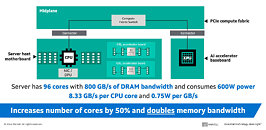
Marvell Develops Industry's First 2 nm Custom SRAM
Marvell Technology, Inc., a leader in data infrastructure semiconductor solutions expanded its custom technology platform with the launch of the industry's first 2 nm custom Static Random Access Memory (SRAM), designed to boost the performance of custom XPUs and devices powering cloud data centers and AI clusters. Combining advanced custom circuitry and software from Marvell with core SRAM and cutting-edge 2 nm process technology, Marvell custom SRAM delivers up to 6 gigabits of high-speed memory while significantly reducing memory power consumption and die area at comparable densities.
Custom SRAM is the latest Marvell innovation designed to enhance memory hierarchy performance within accelerated infrastructure. Marvell previously introduced its CXL technology for integration into custom silicon to add terabytes of memory and supplemental compute capacity to cloud servers and unveiled custom HBM technology that increases memory capacity by up to 33% while reducing the space and power required for dense high-bandwidth memory (HBM) stacks inside XPUs.
Custom SRAM is the latest Marvell innovation designed to enhance memory hierarchy performance within accelerated infrastructure. Marvell previously introduced its CXL technology for integration into custom silicon to add terabytes of memory and supplemental compute capacity to cloud servers and unveiled custom HBM technology that increases memory capacity by up to 33% while reducing the space and power required for dense high-bandwidth memory (HBM) stacks inside XPUs.












































